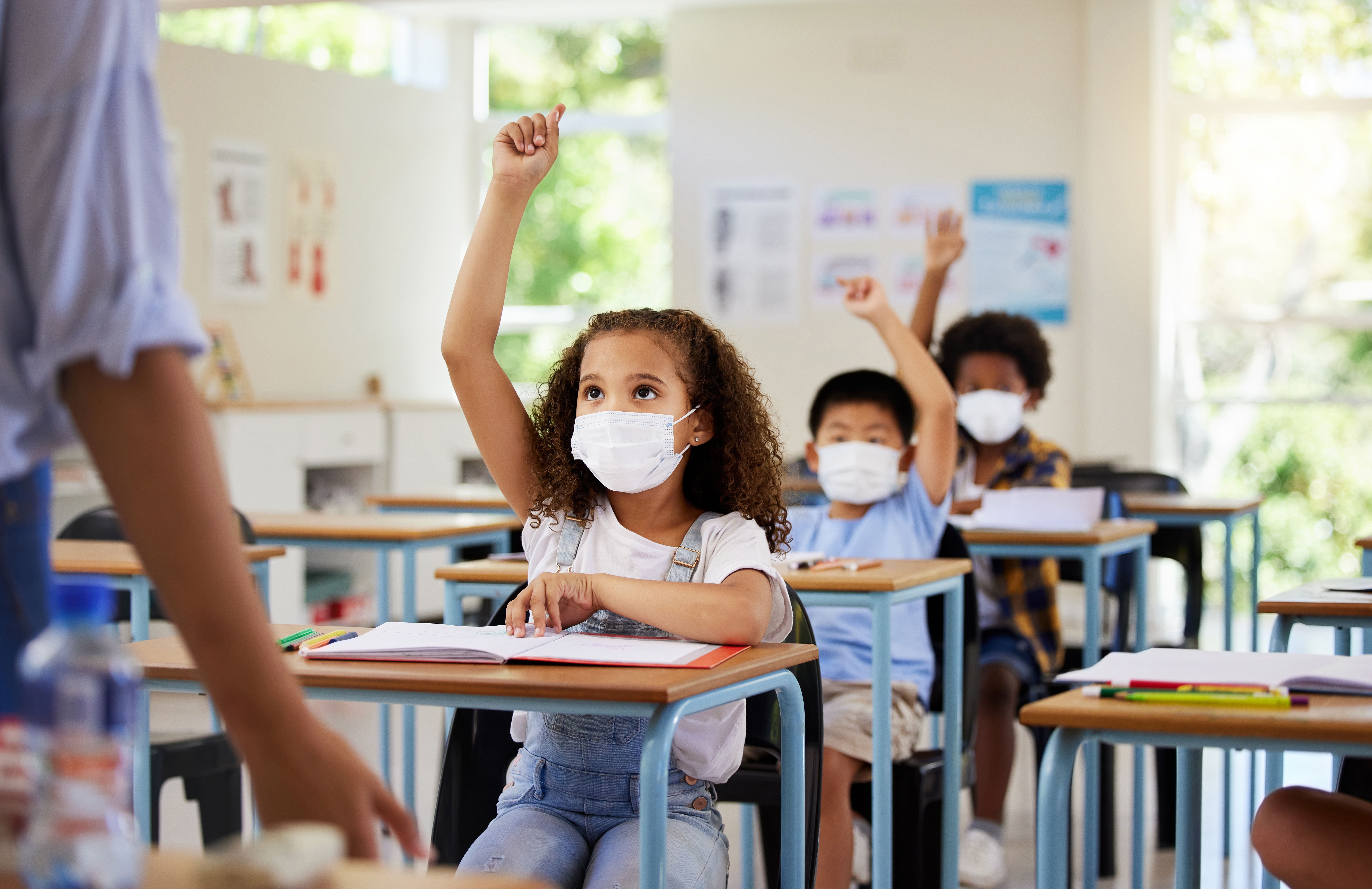
News
Article
Study: School Districts With Greater Social Vulnerability Show Higher Rates of SARS-CoV-2
Author(s):
The findings suggest that varying precautions and factors affected the transmission rates in schools in different periods of the pandemic.
The COVID-19 pandemic created a level of uncertainty for schools and education that the world was not prepared for. After the closing and reopening of schools in the United States with remote and hybrid scheduling, masks, social distancing, ventilation improvements, and more, transmission rates in school were not as high. However, research published in Jama Network notes that the SARS-CoV-2 transmission rates in schools are still unknown.
Children raising hands and wearing masks in a classroom | Image credit: Nina/peopleimages.com - stock.adobe.com

This missing information is due to a lack of detailed contact tracing information that interferes with in-school transmissions versus out-of-school activities, such as play dates and recreational athletics. The study authors noted that the data conducted by the school was during variants that had low transmissibly compared to others.
“Understanding how transmission dynamics differ over time and in association with different SARS-CoV-2 prevention measures may inform future strategies around mitigation measures in schools. As schools adapt to this new era in the SARS-CoV-2 pandemic during which waves of disease may continue to occur, data-driven best practices are needed to maximize in-person learning while minimizing transmission risk to students, faculty, and staff,” said the study authors.
The researchers analyzed this risk by collecting detailed school-based contact tracing data in Massachusetts. Using data from the 2020-2021 school year and the fall term of 2021, the study aimed to describe the secondary attack rate (SAR) of SARS-CoV-2 and its transmissions.
The study group consisted of 25 Massachusetts schools with K-12 students — 8 public schools contributed to the data from fall 2020 to spring 2021. Additionally, 3 out of the 8 original public schools, 1 additional public school, and 1 private prekindergarten contributed to the fall 2021 data.
The researchers used a contact tracing tool that analyzed the symptom onset, testing after exposure in and outside of school, location of exposure, role in school, vaccination history, and individual mask use during the exposure. The different mitigation strategies during fall 2020 to spring 2021 were also assessed.
“We defined the SAR as the proportion of school-based contacts acquiring SARS-CoV-2 infection and designated as either possible or probable school-associated transmission. We calculated the SAR in 3 ways: (1) as ascertained by testing, (2) a lower bound (assuming all untested contacts were uninfected), and (3) an upper bound (assuming all untested contacts were infected). We also repeated the SAR calculation in a sensitivity analysis in which all contacts with positive test results (including those deemed not school-associated transmissions) were included. Index cases with 0 school-associated contacts during the window of infectiousness were excluded from analysis,” said the study authors.
The results found that the SAR was low during both periods of the study. The secondary attack rate was 2.2% in the 2020-2021 school year and 2.8% in the fall of 2021. Students and staff that lived in districts that had a greater social vulnerability were more at risk of exposure, despite the schools’ precautions. Schools with less resources and higher classroom densities were more at risk. Masks mandates reduced the risks of transmissions during the 2020-2021 school year, but in the following year vaccination provided the most protection.
The findings suggest that varying precautions and factors affected the transmission rates in schools in different periods of the pandemic, although schools that had a greater social vulnerability index were more at risk for in-school transmission.
Reference:
Prevalence and Risk Factors for School-Associated Transmission of SARS-CoV-2. Jama Health. News release. August 4, 2023. Accessed August 8, 2023. https://jamanetwork.com/journals/jama-health-forum/fullarticle/2807905?utm_source=For_The_Media&utm_medium=referral&utm_campaign=ftm_links&utm_term=080423.
Newsletter
Stay informed on drug updates, treatment guidelines, and pharmacy practice trends—subscribe to Pharmacy Times for weekly clinical insights.
2 Commerce Drive
Cranbury, NJ 08512
All rights reserved.




